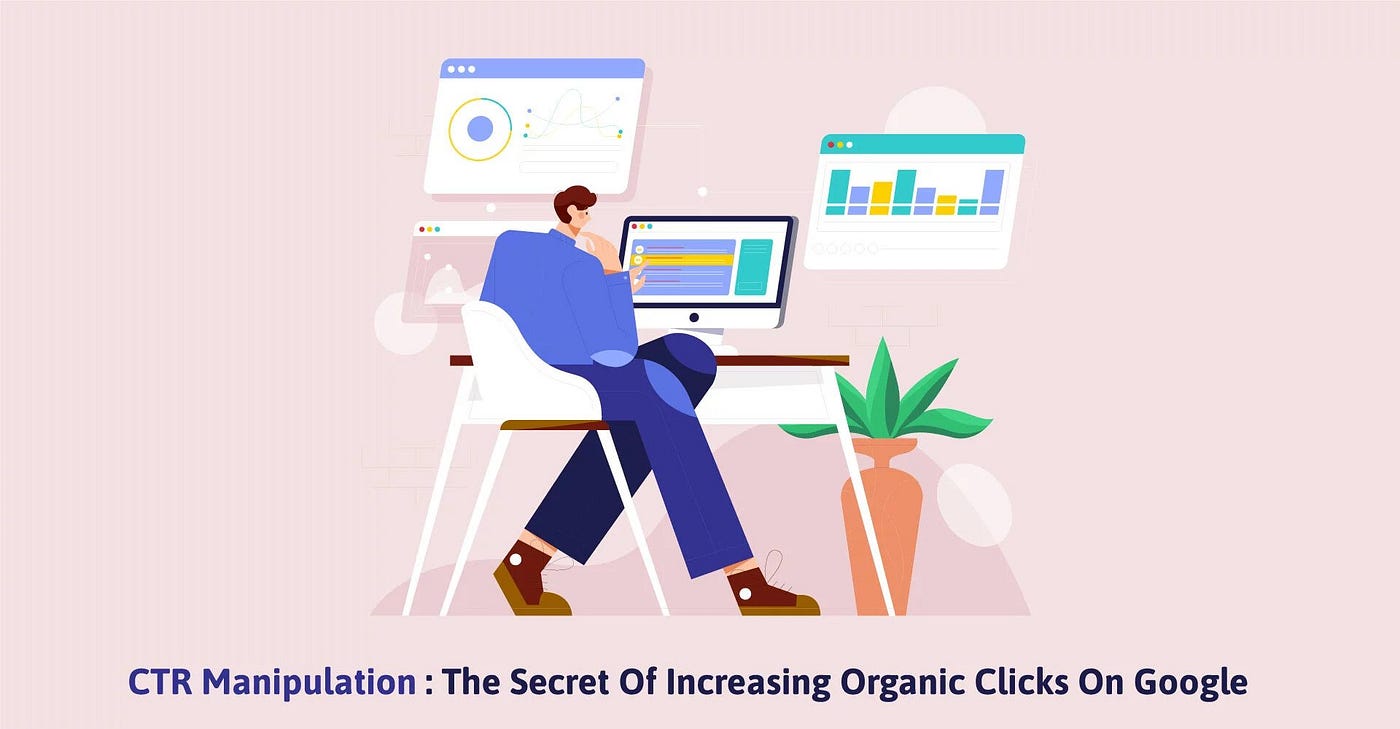GMB CTR Manipulation-- Optimize Your Neighborhood Look Presence with CTR Solutions
GMB CTR Manipulation-- Optimize Your Neighborhood Look Presence with CTR Solutions
Blog Article
CTR Adjustment: A Video Game Changer for Digital Projects
The rise of CTR adjustment has without a doubt changed digital marketing approaches, offering marketers with devices to improve engagement and drive website traffic efficiently. What effects might this balancing act hold for the future of electronic projects?
Comprehending CTR Control
Although click-through rate (CTR) control might appear like an uncomplicated tactic in electronic advertising and marketing, it incorporates a variety of techniques aimed at unnaturally inflating interaction metrics. This control can take various types, consisting of using click farms, robots, or deceitful ad positionings that misinform consumers into clicking. These methods can endanger the honesty of performance information, making it challenging for marketing experts to gauge the authentic efficiency of their projects.
In addition, CTR manipulation raises moral problems, as it undermines the transparency of digital marketing. The reliance on inflated metrics can bring about misdirected marketing choices, skewing resource allotment and campaign techniques. Businesses may spend greatly in networks and techniques that appear successful but do not yield actual interaction or conversions.

Advantages of Click-Through Price Optimization
Enhancing click-through rate (CTR) is important for enhancing the efficiency of digital advertising and marketing projects. A higher CTR indicates that a bigger percentage of users are involving with the material, which can lead to raised internet site web traffic and better conversion prices. By enhancing CTR, brands can properly designate their advertising resources to campaigns that yield the highest possible returns.
One of the primary advantages of CTR optimization is the potential for boosted ad positioning and lower prices - CTR Manipulation. Platforms like Google Advertisements award higher CTRs with better advertisement positioning and reduced cost-per-click (CPC), permitting marketing professionals to stretch their budget plans further. Furthermore, a well-optimized CTR can boost brand presence, as higher involvement rates commonly correlate with boosted natural reach

Strategies for Reliable CTR Manipulation
To successfully control click-through rates (CTR), marketing experts can employ a selection of tactical techniques that improve customer engagement and drive web traffic. One basic click resources approach is enhancing advertisement duplicate to develop compelling and action-oriented language. CTR Manipulation. Using strong call-to-action (CTA) expressions encourages individuals to take prompt activity, increasing the possibility of clicks
One more efficient method is A/B screening, which allows online marketers to contrast various advertisement variants. By methodically assessing efficiency metrics, they can identify which elements resonate best with the target audience, thus fine-tuning their methods for optimal effect. Furthermore, leveraging visually attractive graphics and concise messaging can capture attention swiftly, making it more possible that users will engage.

Finally, optimizing landing web pages to make certain a seamless user experience can reduce bounce prices and urge additional interaction, ultimately cultivating greater CTR. By integrating these methods, marketers can properly adjust CTR to accomplish their campaign purposes.
Determining Success in Digital Campaigns
Determining success in digital projects needs a clear understanding of essential efficiency signs (KPIs) that align with project purposes. KPIs act as measurable metrics that assist evaluate the effectiveness of different techniques used throughout the campaign. Common KPIs include click-through prices (CTR), conversion rates, price per purchase (CERTIFIED PUBLIC ACCOUNTANT), and roi (ROI)
To efficiently gauge success, it is crucial to develop certain, measurable objectives at the outset of the project. If the primary goal is to raise brand recognition, metrics such as impressions and interaction prices may be focused on. In comparison, campaigns concentrated on straight sales would profit from a much more thorough analysis of conversion rates and earnings generated.
Routine evaluation of these KPIs allows marketing experts to make data-driven decisions, optimizing their methods in real-time. Making use of analytical devices can assist in monitoring efficiency and determining patterns, permitting for swift modifications to improve project end results. Ultimately, an extensive strategy to measuring success not only highlights areas for enhancement however likewise reinforces the general performance of electronic marketing initiatives, driving continual development and engagement in the long term.
Future Trends in Digital Advertising
Preparing for the future of digital advertising and marketing discloses a landscape formed by rapid technological advancements and changing consumer behaviors. As synthetic knowledge and equipment learning continue to evolve, online marketers will increasingly leverage these technologies to personalize campaigns at find more information an unmatched scale. Predictive analytics will enable brand names to prepare for client requirements, enhancing ad placements and material distribution in genuine time.
Furthermore, this page the rise of voice search and smart tools is transforming how consumers connect with electronic material. Online marketers will require to adapt their strategies to ensure presence throughout multiple systems, consisting of voice-activated assistants. This change requires a focus on conversational marketing, emphasizing interaction through discussion rather than conventional marketing strategies.
In addition, privacy worries are prompting changes in data collection techniques. Transparency and moral data use will become extremely important, driving brands to foster depend on and loyalty amongst customers. The continuous development of social media sites platforms will certainly also affect marketing methods, with a heightened emphasis on credibility and user-generated web content.
Final Thought
In recap, CTR adjustment stands for a substantial innovation in electronic marketing techniques, providing instant benefits through improved engagement metrics. Nevertheless, the honest considerations surrounding such methods require a careful approach to ensure long-term brand name honesty and real target market link. By striking an equilibrium between optimization techniques and genuine interaction, marketing experts can grow sustainable relationships with customers. The continuous development of digital advertising and marketing will certainly depend upon this fragile interaction, forming the future landscape of brand-consumer interactions.
Report this page